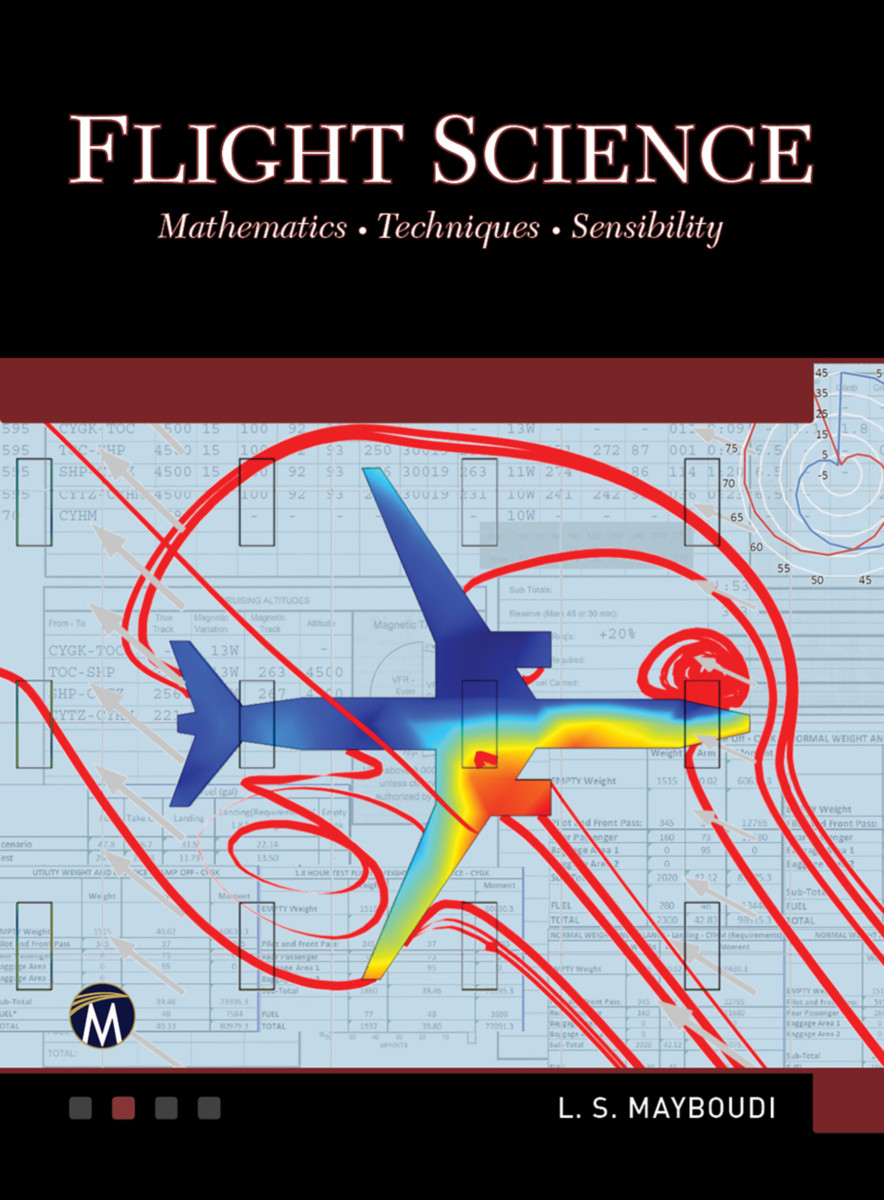Flight Science
Mathematics • Techniques • Sensibility
- Publisher
Mercury Learning and Information - Published
11th March 2019 - ISBN 9781683922155
- Language English
- Pages 500 pp.
- Size 7" x 9"
- Images figures & tables
- Request Exam Copy
E-books are now distributed via VitalSource
VitalSource offer a more seamless way to access the ebook, and add some great new features including text-to-voice. You own your ebook for life, it is simply hosted on the vendor website, working much like Kindle and Nook. Click here to see more detailed information on this process.
- Publisher
Mercury Learning and Information - Published
25th February 2019 - ISBN 9781683922162
- Language English
- Pages 500 pp.
- Size 7" x 9"
- Images figures & tables
- Request E-Exam Copy
Library E-Books
We are signed up with aggregators who resell networkable e-book editions of our titles to academic libraries. These editions, priced at par with simultaneous hardcover editions of our titles, are not available direct from Stylus.
These aggregators offer a variety of plans to libraries, such as simultaneous access by multiple library patrons, and access to portions of titles at a fraction of list price under what is commonly referred to as a "patron-driven demand" model.
- Publisher
Mercury Learning and Information - Published
25th February 2019 - ISBN 9781683923312
- Language English
- Pages 500 pp.
- Size 7" x 9"
- Images figures & tables
This book introduces certain aspects of mathematics and sciences in general, as they relate to the subject of aviation, from the wheels-up to the wheels-down, and the time in between. The topics include
meteorology, thermodynamics, combustion, drones, mechanics, dynamics,
navigation, flight plans, and general aviation-related guidance. The book also
presents the use of statistical analysis in describing the aircraft characteristics based on performance charts. The book may be used as a reference and includes examples and case studies with step-by-step solutions. Readers new to the field who are working towards their recreational, private,
or commercial licenses or one already flying a single piston or multi-engine aircraft will benefit from the content.
Features:
- Includes aviation-related case studies, where the reader can see how the conceptual material is applied to practical scenarios.
- Derives equations, displays the relations in diagrams, and shows the applications of statistical methods to analyses of aircraft performance charts, providing powerful tools for aviation-related research. Mechanical modelling of flying objects and weight-and-balance calculation methodologies are discussed as well.
- Provides pertinent historical background to aviation-related topics such as meteorology, navigation, and mapping, enabling the reader to put in context the current state of are in these areas.
- Presents in detail all essential elements of a real-world flight plan, enabling the reader to use the methodology and example when creating their own flight plans.
1: Connection between Aeronautics and Thermo-Fluid Sciences
2: Meteorology
3: Climate and Atmospheric Thermodynamics
4: Thermodynamics of Air
5: Dynamics of Air and Forces
6: Piston Engine and Combustion Process
7: Unmanned Flying Objects
8: Performance Charts
9: Navigation
10: Flight Plan
11: Special Scenarios
12: Converting a Piston Engine Aircraft to a Turboprop Aircraft
13: Upper Airwork
14: Good Practices and Lean Six Sigma Implementation
15: Conclusion
Appendices
Bibliography
Index
Layla S. Mayboudi, PhD
Layla S. Mayboudi holds a PhD in mechanical engineering with a thermofluids specialization from Queen’s University (Canada). Her specialties include heat transfer modeling and validation, thermal imaging, flow optimization, process improvement (Lean Six Sigma Black Belt), and mechanical test management. She has published books and journal articles and has several years of experience in the aerospace, rail transportation, and education industries.


